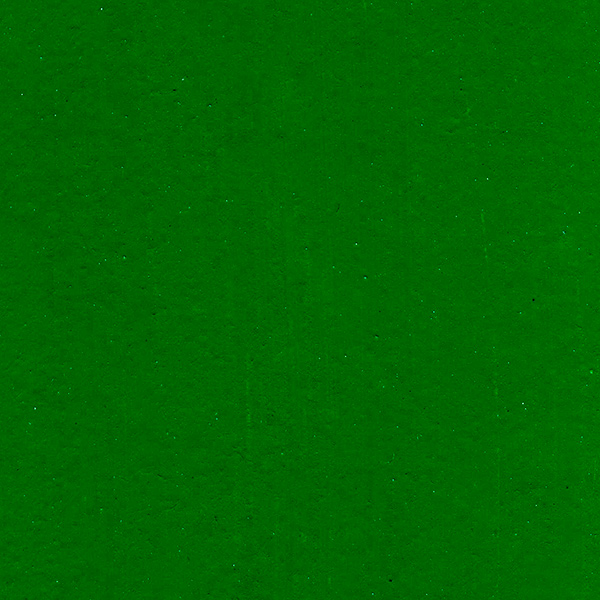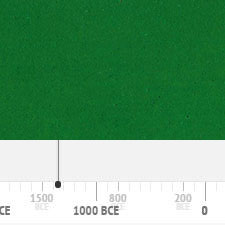Cobalt Titanate Green
Synthetic inorganic pigmentComposition and Properties of Cobalt Titanate Green
Cobalt titanate green is a mixed metal oxide of cobalt and titanium with the formula of Co2TiO4. It is not to be confused with cobalt green also called Rinmann’s green which is a mixed oxide of cobalt and zinc.
The pigment is a very stable and lightfast and is also not toxic. It shows a slightly yellowish tint which makes it ideal for landscape painting.

Pigment

Painted swatch
Names
Color Index
PG 50, CI 77377
Word origin
Cobalt: from the German word Kobold meaning evil house spirit. The name was originated by medieval miners who believed, that cobalt ores made it difficult to extract silver from silver ore.
Titanium: from Latin titan, from Greek titan, member of a mythological race of giants (originally six sons and six daughters of Gaia and Uranus) who were overthrown by Zeus and the other gods. The name is perhaps from tito “sun, day,”
From Online Etymology Dictionary
Kobaltgrün
German
Vert de cobalt
French
Verde di cobalto
Italian
Verde de cobalto
Spanish
Preparation
The pigment is prepared by heating the oxides of cobalt and titanium to temperatures between 800 to 1100 °C.
History of Use
The pigment was discovered around 1930 together with the other mixed oxides of titanium with other elements such as chromium, nickel, and antimony.
References
(1) F. Casadio, A. Bezúr, I. Fiedler, K. Muir T. Trad and S. Maccagnola, Pablo Picasso to Jasper Johns: a Raman study of cobalt-based synthetic inorganic pigments, Special Issue: Raman spectroscopy in art and archaeology, Volume 43, Issue 11, pages 1761–1771, November 2012.
Identification
Raman Spectrum
Raman spectrum can be found in reference (1).
X-Ray Fluorescence Spektrum (XRF)
X-Ray Fluorescence Spectrum in the Free XRF Spectroscopy Database of Pigments Checker, CHSOS website.
References
(1) F. Casadio, A. Bezúr, I. Fiedler, K. Muir T. Trad and S. Maccagnola, Pablo Picasso to Jasper Johns: a Raman study of cobalt-based synthetic inorganic pigments, Special Issue: Raman spectroscopy in art and archaeology, Volume 43, Issue 11, pages 1761–1771, November 2012.
Further Reading
References
(1) F. Casadio, A. Bezúr, I. Fiedler, K. Muir T. Trad and S. Maccagnola, Pablo Picasso to Jasper Johns: a Raman study of cobalt-based synthetic inorganic pigments, Special Issue: Raman spectroscopy in art and archaeology, Volume 43, Issue 11, pages 1761–1771, November 2012.
S. Muntwyler, J. Lipscher, HP. Schneider, Das Farbenbuch, 2nd. Ed., 2023, alataverlag Elsau, pp. 96-97.

